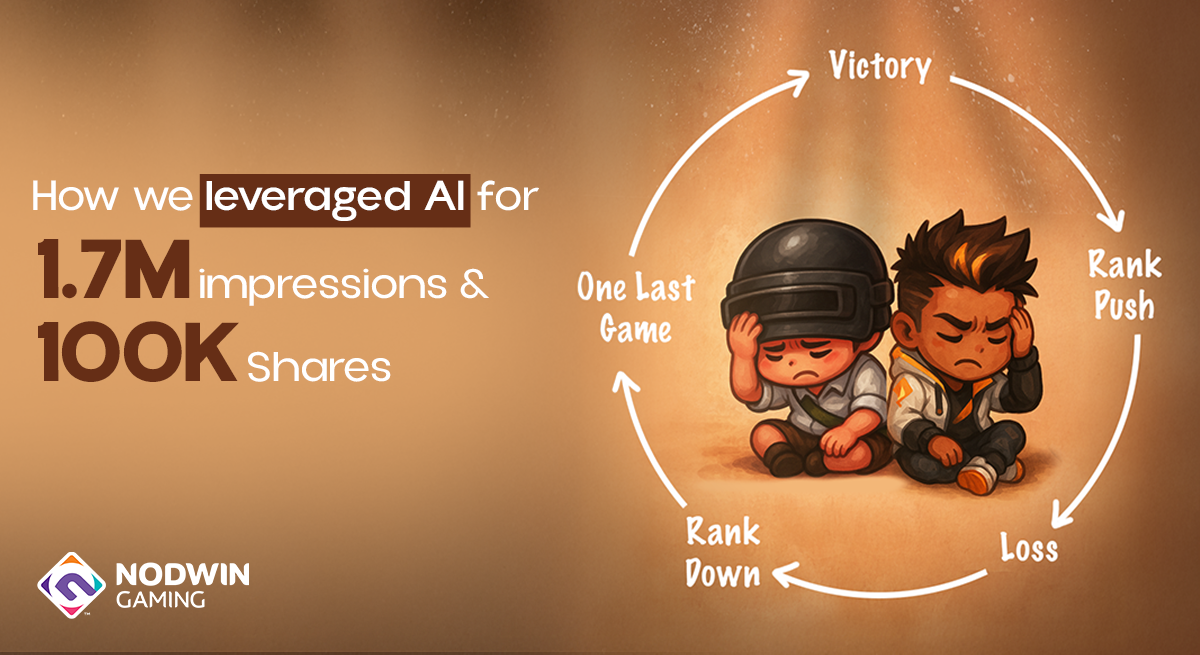In today’s digital world, where attention spans are short and competition is high, staying relevant after a tournament ends is no easy task. For brands in the gaming industry, engagement often drops as soon as the final match is over. Memes get reused, highlight clips lose their charm, and communities go silent. But in a recent gaming marketer case study, we cracked the code for our client NODWIN Gaming with something fresh, AI-powered cartoon art that kept gamers hooked.
Let’s dive into how this campaign worked, why it stood out, and what other brands can learn from this approach.
1. The Challenge: Post-Tournament Drop-Off
Every major tournament generates a burst of hype. But once it ends, engagement drops drastically. In this online gaming case study, NODWIN Gaming was faced with the challenge of keeping fans active and interested after the main event was over.
Traditional tactics like reposting gameplay or memes didn’t help. Fans were bored, and the content didn’t feel fresh. The brand needed something different, something that would keep conversations alive beyond the tournament matches.
2. The Insight: Gamers Connect Through Emotion
The heart of any community is emotion. Gamers don’t just play, they feel. Frustration, joy, pride, rage, laughter… It's all part of the experience. So instead of focusing on gameplay, the team focused on the emotional journey of gamers.
This insight is what gave direction to the campaign. The idea was simple but powerful: what if we captured the feelings of the game, not just the play?
This step marked a major turning point in this game design case study moving from content that shows to content that makes people feel.
3. The Solution: AI plus Character-Driven Storytelling
The team turned to AI to bring this idea to life. But not in the usual way.
They created a series of AI-generated illustrations, each inspired by iconic gamer moods—like rage-quits, clutch wins, hilarious fails, or bonding moments with the squad. The twist? These were illustrated as cartoon-style characters with bold colors, exaggerated expressions, and strong visual appeal.
Every image felt
Relatable
Scroll-stopping
Share-worthy
It was no longer just a post, it was a digital collectible, something that felt personal and fun.
4. The Campaign Impact: Numbers That Speak Volumes
Once the series launched, the gaming community took notice. Each new post drew massive traction, not just in views, but in shares and engagement. Fans tagged their friends, saved the artwork, and related their own stories in the comments.
Here’s what this standout among gaming case studies achieved:
1.7 million impressions
1.2 million reach
243K engagement
100K shares
That kind of organic reach wasn’t just a fluke, it was a result of understanding gamer culture deeply and executing with originality.
5. Why It Worked: Strategy + Relevance
This campaign had three key things working in its favor:
Speed: AI helped produce unique content quickly.
Cultural insight: The content mirrored real gaming experiences.
Tone: The cartoon-style visuals made it playful, not preachy.
Most importantly, it didn’t try to sell anything. It simply celebrated the gaming spirit. That’s why it resonated—and that’s what makes this online gaming case study a blueprint for future campaigns.
Conclusion: Emotion Is the Real MVP
In a world full of trends and algorithms, sometimes the real trick is going back to basics—understanding your audience. This campaign showed that when brands lean into the emotions and inside jokes that define a community, they don’t just get attention; they earn loyalty.
So if you're planning your next campaign, take a cue from this gaming case study: mix creativity with cultural truth, and let your content speak to hearts, not just minds.



